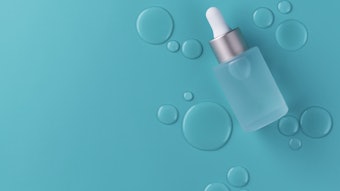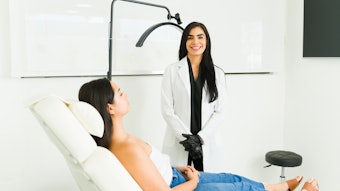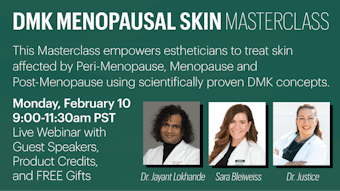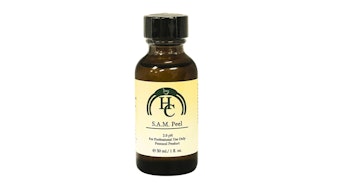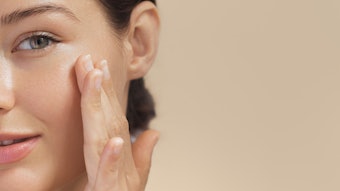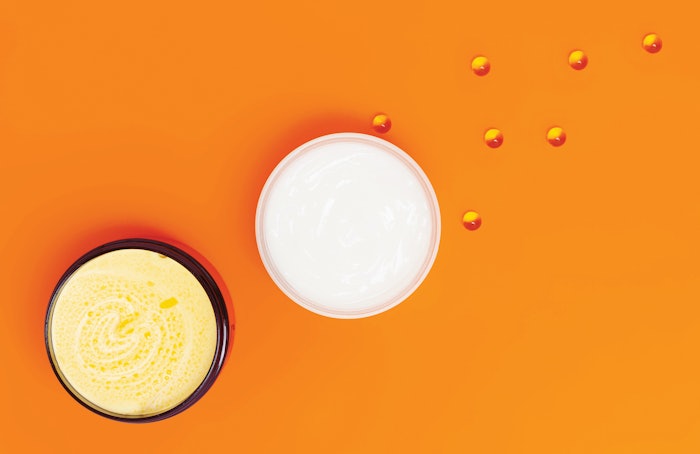
The aesthetic industry has grown and developed over the last twenty years! What was primarily peels, microdermabrasion, facelifts and deep CO2 lasers, has changed dramatically. Medical aesthetics offers a range of procedures and requires a range of healthy skin-strengthening aftercare. After any skin procedure that is impacting the epidermis or dermis, it will need special attention for the next days, weeks or months, depending on the depth and type of device or treatment.
This article is only available to registered users.
Log In to View the Full Article
The aesthetic industry has grown and developed over the last twenty years! What was primarily peels, microdermabrasion, facelifts and deep CO2 lasers, has changed dramatically. Medical aesthetics offers a range of procedures and requires a range of healthy skin-strengthening aftercare. After any skin procedure that is impacting the epidermis or dermis, it will need special attention for the next days, weeks or months, depending on the depth and type of device or treatment.
Skin is in a wounded state and will go through all the wound healing stages. It is critical to avoid skin-irritating ingredients like synthetic fragrances, dyes, parabens, sodium lauryl sulfate, mineral oils, lanolin or other toxic ingredients and focus on rebuilding, strengthening and hydrating the skin. Sadly, many medspas and physician offices are still recommending Aquaphor, and we need to change this.
Stages of Wound Healing
1. We begin with an inflammatory response, which starts immediately upon a perceived injury to the skin or body. The four signs of inflammation are swelling, redness, heat and pain or discomfort. It is during the inflammation stage that platelets release growth factors.
2. Re-epithelialization, granulose tissue formation and angiogenesis are the second phase of wound healing. Re-epithelialization begins within the first 24 hours and is the migration of keratinocytes to the base of the wound, which will also increase cell proliferation.
3. Granulose tissue and angiogenesis formation begin on the second or third day. The fibroblast is the chief cell involved in the formation of granulosa tissue. New blood vessels and extracellular matrix respond as well in creating the support and protection needed during this phase. Essentially, it provides the skin with a temporary barrier for protection to the wounded area and supplies nutrients and oxygen for healing.
4. The remodeling phase is the building of collagen. The fibroblast cell and its functions are key at this stage. It is responsible for the texture of the skin. Water is resorbed, the collagen fibers bundle closer together and the epidermis cells become healthier and thicker in appearance. This stage begins when the inflammatory response ends, and this stage can continue for months, depending on the depth of treatment.
As the skin is going through these stages, our skin is more vulnerable and anything we apply to the skin will impact it more significantly.
Medical Procedures
As previously mentioned, this industry has grown! Lasers, IPL, BBL, injectables, micro-needling, micro-needling RF and more, and of course, with each procedure, there are levels of intensity, so it is not a one-size-fits-all regimen for aftercare.
Injectables have grown from collagen injections and Botox to several different neurotoxin injectables, hyaluronic acid fillers and more. The skin may experience redness, swelling, tenderness and some level of bruising in most cases. 20% Arnica montana extract, along with soothing botanicals and healing amino acids, can support the skin significantly. Arnica increases circulation and speeds up the healing of bruises. Blood rushes to the surface and becomes trapped with these type of injections so clearing and moving the blood out with arnica extract is very helpful.
The other great thing about arnica is that it reduces inflammation and decreases pain! Some studies have shown it to be as effective as Ibuprofen. For optimal results, begin using arnica three days before your appointment and continue to use it up to three days after to reduce the bruising and alleviate discomfort. Look for a superior formula with other healing components and no skin irritants for increased results and no negative effects on the skin.
Nonablative lasers use light energy to penetrate the skin without causes the surface to have an exfoliation or disturbance.
- Yellow laser: Targets yellowing pigments in the skin, reducing discoloration.
- Intense pulsed light (IPL): Treats a variety of skin concerns, including sun damage, rosacea and spider veins.
- Broad band light (BBL): This is an advanced form of IPL.
All of these use light therapy at various wavelengths, yet each one targets different concerns in the skin. These nonablative options heat the skin and cause fibroblast stimulation without removing the surface layer. They do tend to create a lot of erythema, which is redness in the skin, some tenderness and possible heat. Days following these treatments, the skin may become drier, tighter and begin to flake. With these treatments utilizing ingredients to release heat from the skin, reduce inflammation, protect barrier function, bring cellular longevity and healing, as well as increase hydration, your skin will not only feel great, but it will enhance the final results, giving you a more lasting change and healthier skin.
Thermus thermophilus ferment is an advanced scientific ingredient found in deep oceanic waters and natural hot springs that release heat from the skin and inspire healthy oxygenation and protect from environmental stress, all while promoting cellular wound healing. T. thermophilus ferment replenishes skin's glycoproteins, providing a resilient barrier. Thioctic (R-lipoic) acid is a beautiful ingredient providing anti-inflammatory, powerful antioxidant benefits as it is considered a “universal antioxidant”. This means it can function in every cell and tissue because it is both fat (oil) and water-soluble! Amazing! R-lipoic acid affects the mitochondria, which are considered the powerhouse of the cells. The function of the mitochondria is vital during wound healing!
Another great one is ubiquinone (coenzyme Q10), as it regenerates skin, assists in cellular growth and protects against oxidative stress. Apple Cell Culture Extract (Malus domestica) protects and maintains the function of skin stem cells and ensures the longevity of skin cells. This stem cell ingredient is very sophisticated and has great promise in the ability to repair and bring about healthy skin cells! Alteromonas ferment extract reduces skin irritations and helps to increase natural hydration within the skin. This ingredient will help to strengthen and protect the barrier.
Epidermal growth factor is another highly recommended ingredient for healing and strengthening cells. It is a protein that attracts cells to the injured area and is a key component internally during the healing process. It's vital for ablative lasers as well.
Ablative laser treatments remove the outer layer of skin for rejuvenation and stimulation of fibroblast cells.
- Fractional CO2 laser: Targets water molecules in the skin, stimulating collagen production.
- Erbium laser: Similar to fractional CO2 laser, but penetrates deeper into the skin.
These types of lasers could be looked at as more similar to a chemical peel in the way the skin responds and goes through wound healing, but certainly on a much deeper level. Most patients will experience redness, swelling, itching and discomfort.
The skin will be tender to the touch and need many aftercare products to bring relief and ensure proper healing. White petrolatum can be a best friend. Refined and medical-grade, white petrolatum assists in creating a protective barrier and cooling the skin. Indian ginseng root extract is an amazing herb that accelerates cell renewal, reduces Trans Epidermal Water Loss (TEWL) and repairs damaged barriers. D-alpha-tocopherol, a chirally corrected form of vitamin E, is known for its ability to heal damaged tissue. It's also rich in antioxidants to protect against lipid peroxidation triggered by free radicals. Squalane is another beautiful ingredient at this stage and is naturally derived from olives, is rich in antioxidants and restores damaged lipid barriers. Oleic and linoleic acids are highly beneficial for hydration, and both have great anti-inflammatory properties. Of course, SPF will be crucial to prevent pigmentation and other potential damage.
Microneedling continues to grow in popularity for its ability to increase collagen synthesis and reduce the appearance of fine lines, wrinkles, acne scarring, surgical scars and even pigmentation. This is not a medical-only procedure, but I wanted to do a brief discussion on this due to its popularity. The medical term for this treatment is percutaneous collagen induction therapy. Meaning, a device with tiny needles used across the skin, creating microscopic punctures in the skin. Due to these micro-punctures, wound healing is initiated and collagen synthesis is activated. Typically, a series of three or more treatments is needed to see lasting changes, and these are great to do in conjunction with chemical peels.
Post micro-needling, the skin may experience redness, some swelling, inflammation and potentially some flaking too. Nourishing and feeding skin with ingredients like epidermal growth factors, hyaluronic acid, d-alpha-tocopherol and other amazing ingredients already mentioned will ensure better results and can eliminate complications.
A few final words:
- It is extremely important to be aware of ingredients with any of medical procedures that leaves the skin vulnerable and in a healing stage.
- An occluded or wet wound heals faster than a dry wound.
- Alleviating pain and bringing relief to the skin makes a difference.
Taking care of the skin after a medical procedure is just as valuable as the procedure itself and can keep the skin from pigmenting, scarring and a plethora of other complications that can arise. Take aftercare seriously—you will be amazed at the difference!
